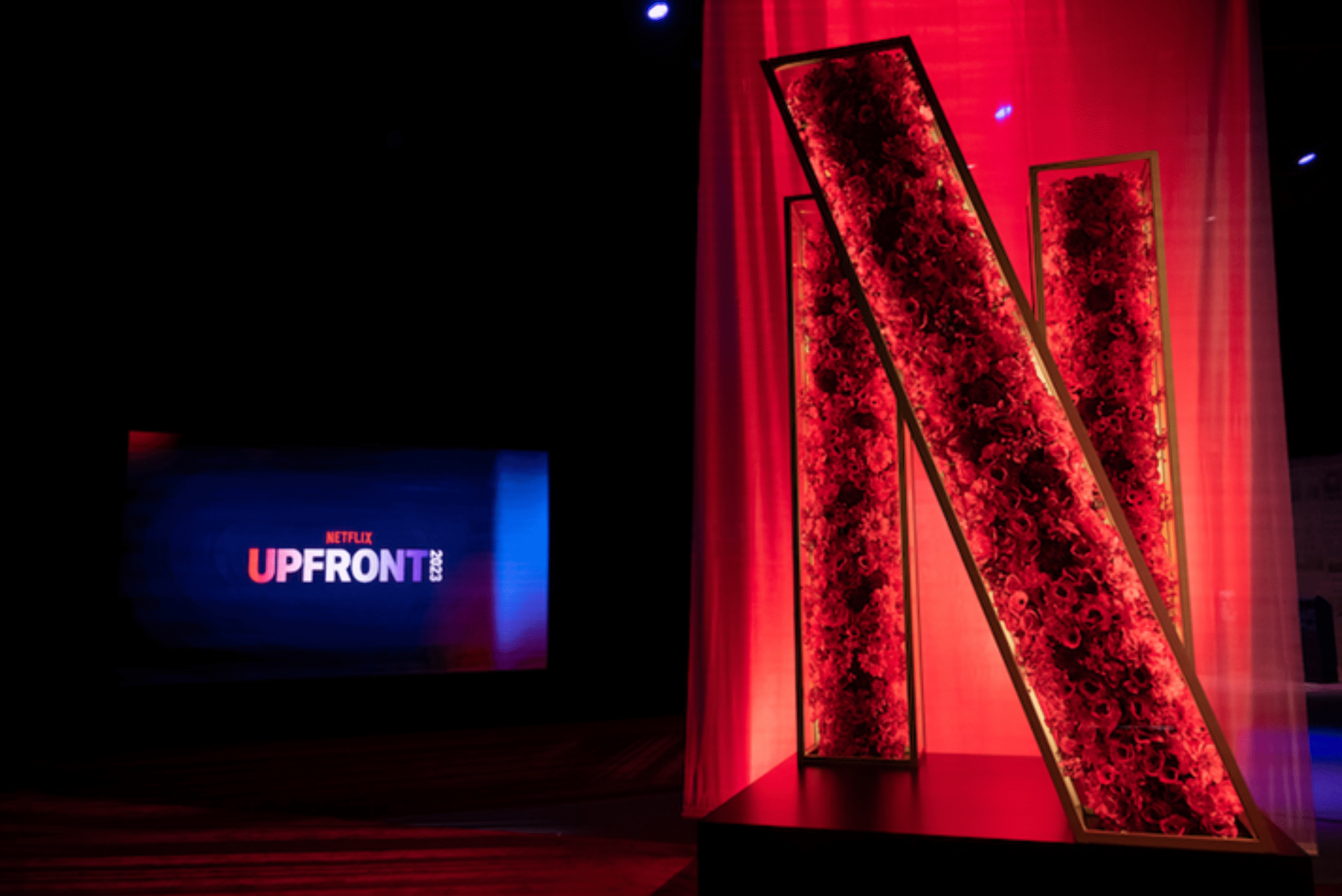Front and Center: Lessons from the 2025 TV Upfronts

Upfronts 2025:
The 2025 TV Upfronts made one thing clear: the media landscape isn’t just evolving, it’s running into a new era. Held across multiple New York venues last week, this year’s presentations were less about fall lineups and more about future-proofing. From streaming giants flexing their ad tech muscles to networks doubling down on live sports and diverse audiences, the week was a whirlwind of strategy, spectacle, and subtle power plays. Whether you’re a media buyer, marketer, or just trying to keep up, here’s what stood out, and what it all means for the future of television.
Netflix Is Here To Take Center Stage:
At the 2025 TV Upfronts, Netflix introduced a bold new vision for advertising on its platform, centered around AI-driven innovation and first-party data. One of the headline updates was the integration of generative AI to create immersive, context-aware ads. These ads can appear organically within content—such as product placements in scenes inspired by shows like Stranger Things, or surface during pause screens with interactive elements. Netflix aims to make advertising feel less intrusive and more engaging, with a phased rollout beginning in late 2025.
In addition to the tech upgrades, Netflix emphasized its growing ad-supported tier, now reaching 94 million monthly active users, more than double from the previous year. This rapid growth, combined with Netflix’s rich first-party data, positions the company to offer highly personalized and effective ad targeting. The message to advertisers was clear: Netflix is no longer just a streaming juggernaut, it’s a serious player in the ad tech space, blending innovation, scale, and storytelling to redefine what streaming advertising can be.
Content Creators Drew Significant Attention:
At the 2025 Upfronts, creators took center stage, signaling a significant shift in advertising strategies. Platforms like YouTube, TikTok, and Meta emphasized the role of influencers and content creators in connecting with audiences, particularly Gen Z. YouTube’s Brandcast event featured creators such as MrBeast, IShowSpeed, and Sean Evans, highlighting the platform’s commitment to creator-driven content. Similarly, TikTok and Meta showcased their investments in creator partnerships, underscoring the importance of authentic, relatable content in today’s advertising landscape.
This focus on creators reflects a broader industry trend where advertisers recognize the value of influencer-led campaigns in driving engagement and brand loyalty. By integrating creators into their core marketing strategies, brands aim to foster deeper connections with consumers through personalized and immersive experiences. The 2025 presentations underscored that in the evolving media environment, creators are not just supplementary assets but central figures in shaping the future of advertising.
HBO Rebrand…Again:
Warner Bros. Discovery (WBD) announced a major shift in its streaming strategy by reintroducing the “HBO Max” branding, reversing a previous decision to drop “HBO” from the name. The move is intended to reinforce the platform’s association with high-quality content that HBO is known for, distancing it from more generalized entertainment offerings. A sleek monochrome logo accompanied the rebrand, along with appearances by stars from hit HBO series, underscoring the company’s renewed focus on premium storytelling and its most acclaimed properties.
As expected, the rebrand sparked plenty of social media mockery, after all, it marks the fourth name change for HBO’s streaming platform in just five years. Still, credit to HBO for embracing the chaos. Max updated its bio on X (still widely known as Twitter) to “these rebrands are trying to murder me,” a witty reference to one of its hit shows. It followed that with a series of self-aware memes, playfully poking fun at its identity crisis and the public’s reactions.
Amazon Shoppable Ads Merge Media & Commerce:
Amazon Prime Video is enhancing its advertising offerings by introducing shoppable ads that integrate real-time retail data, effectively merging media and commerce. These new ad formats, including contextual and pause ads, reflect a growing shift towards interactive and personalized advertising experiences. By leveraging its e-commerce capabilities, Amazon aims to provide advertisers with full-funnel marketing solutions that connect content with commerce, offering a seamless shopping experience for viewers.
In addition to these advertising innovations, Amazon is expanding its sports content with year-round packages, aiming to attract a broader audience and provide advertisers with more opportunities to engage with viewers. This strategic move underscores Amazon’s commitment to integrating entertainment and shopping, positioning Prime Video as a platform where viewers can not only watch their favorite sports but also interact with related products in real-time. Through these initiatives, Amazon seeks to redefine the streaming experience by combining content consumption with interactive commerce.
So Where Do We Go From Here:
We saw from this year’s Upfronts how the 2025 TV Upfronts marked a turning point in the television and streaming industry, emphasizing innovation, interactivity, and adaptability over traditional programming models. It shows that we’re no longer in an era where fall schedules and linear TV dominated advertiser attention. Instead, platforms are future-proofing, introducing advanced ad tech, expanding content strategies, and redefining viewer engagement to meet the evolving demands of consumers and marketers alike.
In short, the future of television isn’t just about what we watch, it’s about how we interact with it, who we trust to present it, and how seamlessly it integrates into our lives. The 2025 Upfronts made that loud and clear.
Discovery call
We can start right now. Simply complete a quick form and we’ll set up a discovery call to dive deep on your business needs.




